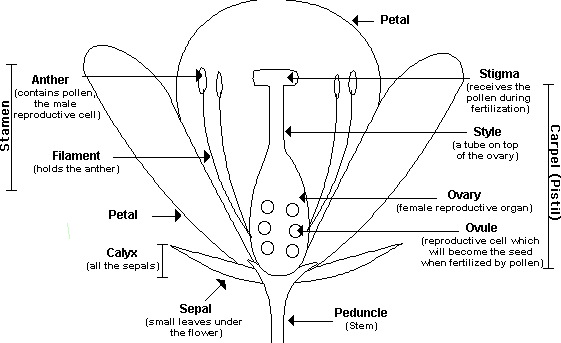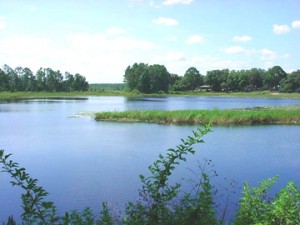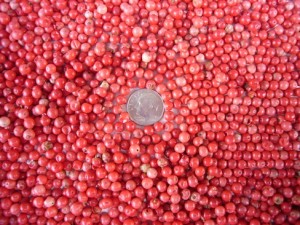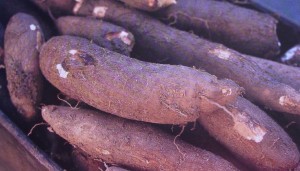Announcing The:
The Green Deane Forum is now on line. Please visit, rummage around, answer a post or two or add some posts. It had three subscribers in the first hour, one of which was a spammer who had to be deleted. Two to the good. Moving forward. The current boards are: First-Time Forager, What’s in Season, What Is It?, Edible Plants, Edible Critters, Edible Insects, Plants as Medicine, Survival Foraging, Prehistoric Cooking, Primitive Skills, Permaculture/Edible Landscape, Growing Weeds, Gardening, Edible Flowers, Recipes, General Discussion, Paleo Palate, Vegan/Vegetarian, Raw Food, Meet & Greet, Ask Green Deane.
No doubt some new boards will be added as they are identified and others discontinued. Most popular so far is “What Is It? where one can get plants identified. There aren’t too many forum rules, just keep it clean and civil: Kids and schools and my 87-year-old mother log in. If you have any suggestions please let me know. In the reference section I have added Wild Food Plants of the United States and Wild Plants for Survival in South Florida, both by Professor Julia Morton who was the grand dame of edibles and toxic plants. Neither were published originally with accompanying comprehensive photos. Here’s a link to Green Deane’s Forum.
? Brazilian Pepper Update: On a Saturday morning a fortnight ago I collected several branches heavy with ripe red berries. I wore rubber gloves because I had a class the next day and did not want to miss it, just in case I had a reaction to handling the tree and berries. I put the branches in a plastic bag with ventilation and hung it in the shade until Wednesday afternoon (sometimes life gets in the way of doing interesting things you want to do.) Again while wearing gloves I removed with scissors the leaves from all the branches hanging up two branches with just berries in a dark, dry closet. The rest of the berries I removed from their stems. I noticed I had no petioles sticking to the berries, a problem if one tries to separate them while still on the tree. I put those berries in a dehydrator and dried them at 120°F for two hours, 110°F for one and then no heat for one hour, for a total of four. They shrank some and are very light. I tasted but did not consume a small piece. Very peppery and heavily perfumed. Tasted slightly medicinal to me. That flavor lingered for a long time, well over an hour. While one can definitely taste “black pepper” in the berry there are other flavors as well. I did not detect cinnamon as some people report. I have no idea when the berries in the closet will be dry. Stand by.
? One question I am asked often, usually by novice gardeners, is what can they grow in the shade for food? The traditional answer is “not much.” A few leafy vegetables can produce a lesser yield in the shade, lettuce comes to mind. The problem is such “food” is usually not sustaining, that is, the energy needed to raise something like lettuce is usually greater than the energy you receive from it. Most root crops are a near total failure in the shade and don’t produce enough to make their cultivation worth your while.
There are two solutions to the shade issue, particularly if you live in a warm area or can start plants inside or even overwinter them. One is to plant species that climb up to the sun — yams come to mind, Dioscorea alata, or the Milkweed Vine, Morrenia odorata. The latter can climb to the top of 100 foot trees for sun. A second answer is to find a plant that actually thrives in the shade and produces energy-worthy produce. There happens to be just such a plant, Giant Taro.
How can Giant Taro succeed in the shade where other root crops fail? The answer is huge leaves up to four feet long and two feet wide… solar collectors… While the Giant Taro can be harvested before maturity, if left alone it can produce, in the shade, a root that is a foot long and half a foot through. To read more about the Giant Taro, click here.
 Botany Builder #14: It can be tedious to learn parts of flowers or plants in general. And while there are many flower parts, depending upon the type of flower, there are four parts that we should know about because they are often used for identification.
Botany Builder #14: It can be tedious to learn parts of flowers or plants in general. And while there are many flower parts, depending upon the type of flower, there are four parts that we should know about because they are often used for identification.
The male part of the flower is called the stamens, fairly easy to remember, think male and staMENS. The top of the stamens is the anther (like antlers.) That is where the pollen is. The anthers sit on top of a filament, the bottom part of the stamens. Often the number of filaments and anthers is used to identify a species.
The female part of the flower is called the carpel, commonly the pistil. From the bottom up the carpel is comprised of the ovule, the ovary, the style and stigma, the very top which catches the pollen. The stigma sits on the style as the anthers sit on the filament. Variation of the carpel also assists in identification. Both the carpel and the stamen aid in identification.
The other two significant parts, petals and sepals, can also be a bit confusing. Both are modified leaves. Usually the petals are above the sepals and the carpel and stamens above the petals. On many flowers what we call petals are actually sepals. The day lilly is usually three petals and three sepals though they look like six petals. With the Beebalm and the poinsettias the sepals are very showy whereas the petals and blossoms are small or not showy at all.
Usually the sepal is at the bottom, next up is petals. The carpel is in the middle and stamens around the carpel. Don’t be surprised if a description says the stigma is cross shaped and there will be between 10 and 20 stamens.
? Recently Added Articles: Giant Taro, Edible Flowers Part Thirteen, Tulip Tree.
? A reminder: On the weekend of March 23-25 there will be a large herbal conference in Ocala. I will be presenting as will several others more august than I. Because you subscribe to my newsletter you can get a discount. If you register using the code EATTHEWEEDS you will receive a 20% discount off of registration. To register, or learn more, visit www.FloridaHerbalConference.org. See, there are benefits to being involved. March is a wonderful time for plants and people in Florida. Here’s what you need to know and some highlights:
 The Florida Herbal Conference is March 23-25 in Ocala at Camp Kiwanis located in the national forest. Teachers from around the state will gather to share their wisdom and experience about herbs and healing. Participants can choose from over 30 workshops, plant walks, and classes throughout the weekend, ranging from Clinical Herbalism to Kitchen and Garden medicine. Relax with recreational activities such as dance, henna, yoga, singing, canoeing or just unwinding under graceful live oaks. Enjoy evening musical performances by In Curses and Surcular Souls. Find treasures and necessities from artisans and crafters in our Herbal Marketplace. Take home memories and new knowledge. Special keynote speaker is the renowned herbalist Rosemary Gladstar who will inspire and enliven you, making this an event you won’t want to miss or forget. The conference is hosted by the Florida School of Holistic Living. Camping is included in registration, indoor lodging is also available. Proceeds benefit United Plant Savers, and all participants will receive membership when they register for the conference. Register using the code EATTHEWEEDS and receive a 20% discount off of registration. To register, or learn more, visit www.FloridaHerbalConference.org.
The Florida Herbal Conference is March 23-25 in Ocala at Camp Kiwanis located in the national forest. Teachers from around the state will gather to share their wisdom and experience about herbs and healing. Participants can choose from over 30 workshops, plant walks, and classes throughout the weekend, ranging from Clinical Herbalism to Kitchen and Garden medicine. Relax with recreational activities such as dance, henna, yoga, singing, canoeing or just unwinding under graceful live oaks. Enjoy evening musical performances by In Curses and Surcular Souls. Find treasures and necessities from artisans and crafters in our Herbal Marketplace. Take home memories and new knowledge. Special keynote speaker is the renowned herbalist Rosemary Gladstar who will inspire and enliven you, making this an event you won’t want to miss or forget. The conference is hosted by the Florida School of Holistic Living. Camping is included in registration, indoor lodging is also available. Proceeds benefit United Plant Savers, and all participants will receive membership when they register for the conference. Register using the code EATTHEWEEDS and receive a 20% discount off of registration. To register, or learn more, visit www.FloridaHerbalConference.org.
? I’m sure you’ve heard the old advice: Never discuss religion and politics … and the environment. However, two reports recently, if correct, add more reason to learn how to forage for wild food.
 The “Met Office and the University of East Anglia Climatic Research Unit” (right) says data from 30,000 measuring stations shows the world’s temperature stopped rising in 1997. The figures, they say, suggest we are heading for a mini ice age. Also last week climate scientists said the sun had been putting out more energy in the 20th century than usual and is now heading towards a “grand minimum.” That means, they say, colder summers, more bitter winters and a shortening of the season to grow food. This, of course, is in opposition to the view the globe is warming. For the sake of argument:
The “Met Office and the University of East Anglia Climatic Research Unit” (right) says data from 30,000 measuring stations shows the world’s temperature stopped rising in 1997. The figures, they say, suggest we are heading for a mini ice age. Also last week climate scientists said the sun had been putting out more energy in the 20th century than usual and is now heading towards a “grand minimum.” That means, they say, colder summers, more bitter winters and a shortening of the season to grow food. This, of course, is in opposition to the view the globe is warming. For the sake of argument:
While cooler climate changes could effect wild edibles as well as cultivated ones, the wild plants are tougher and more hardy. They also adapt more quickly and already cope with finicky nature. Cultivated plants are essentially pampered. That all means if… and that is a big “if”… if the climate is cooling that could add even more pressure on the commercial food supply. Knowing what grows and when could be valuable knowledge in the future.
? Upcoming Classes:
Saturday, February 11th, Highwoods Preserve, 8401 New Tampa Blvd., Tampa, 9 a.m.
Sunday, February 12th, Mead Garden: 1500 S. Denning Dr., Winter Park, 9 a.m.
Saturday, February 18th, Wickham Park: 2500 Parkway Drive, Melbourne, FL 9 a.m.
Saturday, February 19th, Mead Garden: 1500 S. Denning Dr., Winter Park, FL 9 a.m.
? Bimonthly, or every other week, that’s is probably what the newsletter is going to go to because the new forum takes up so much time.
To donate to the Green Deane Newsletter click here.





Dean,
Great Forum. I’ll definitely be visiting. That was a great edible plant walk up at the FL Earth Skills Gathering. I learned a lot. Hopefully I’ll see you in Melbourne next month.
Hank Fannin
Do you ever have foraging classes in the vicinity of the San Fernando Valley, in California? There are the Santa Monica mountains, Malibu Cyn. Park, and many other venues with abundant plant communities.
Not too often, but FeralKevin might… http://feralkevin.com/
Great site, great info! I am putting together a survival group to aid people in a major disaster situation, or being lost in the wilderness, or generally if the defication hits the air circulator situations. I have two people that are knowledgeable on edible plants within my group but this is a Godsend to me as a training tool. All my members will be given your website and forum info. Thank you for what you are doing and may God bless you. Lonnie